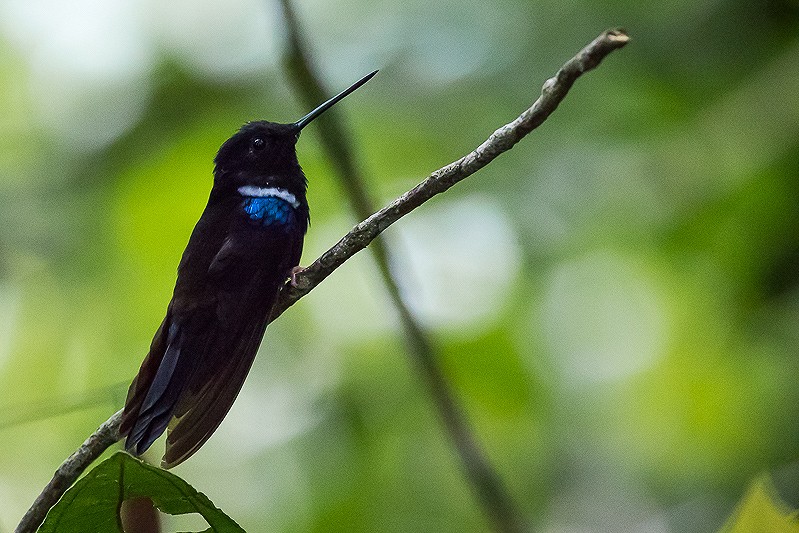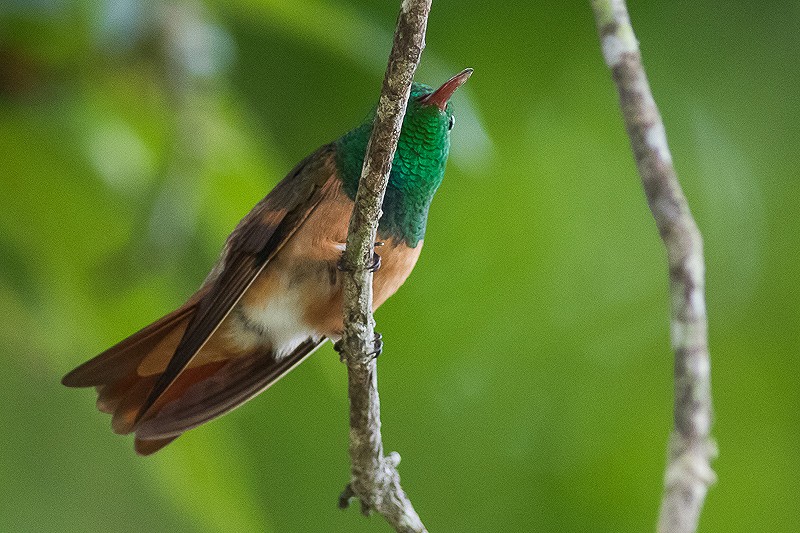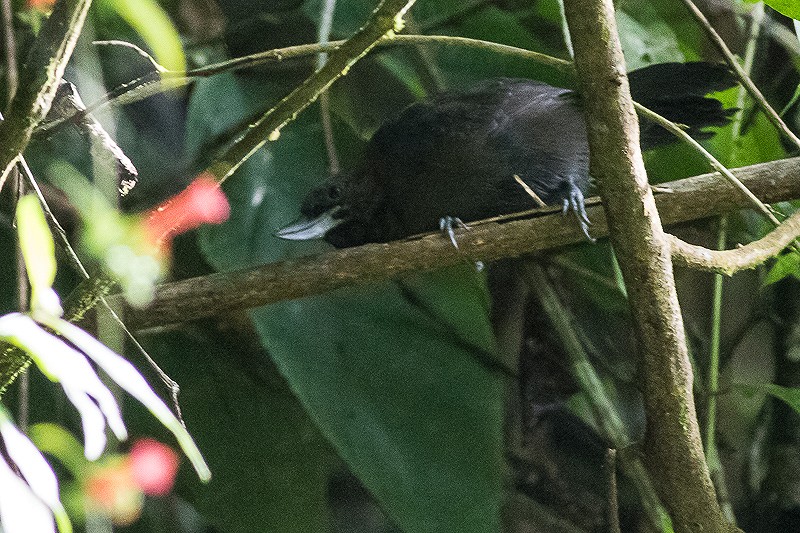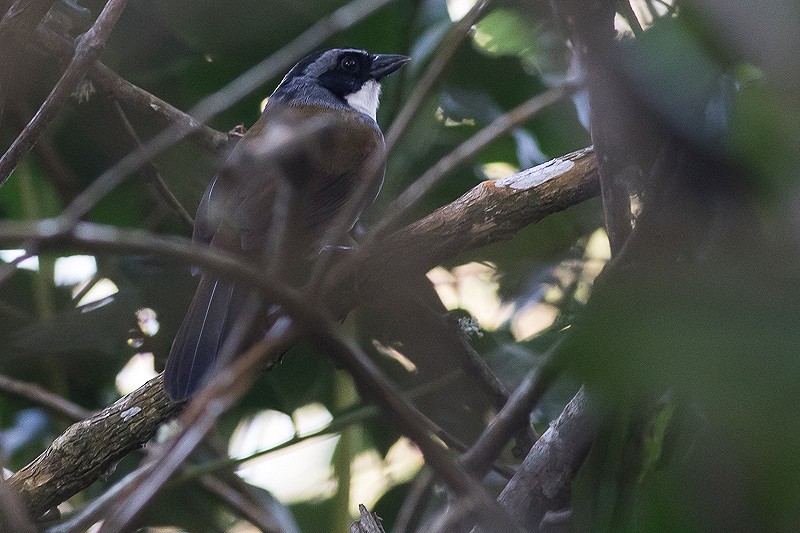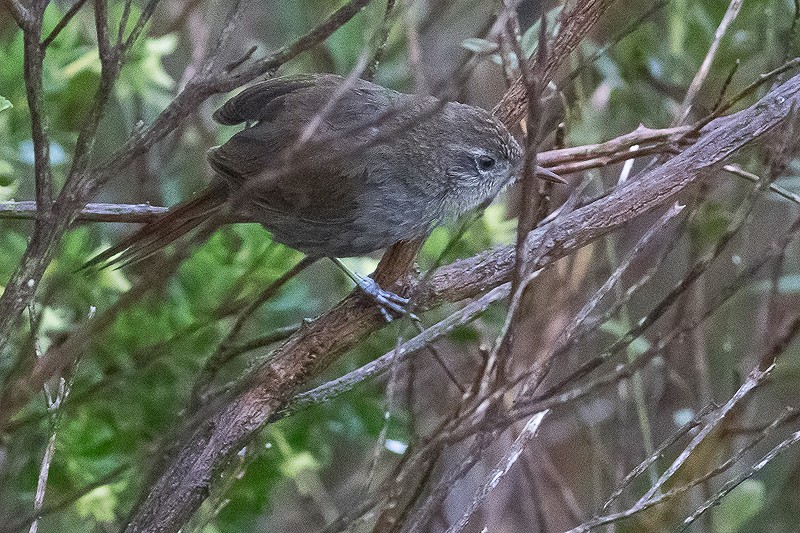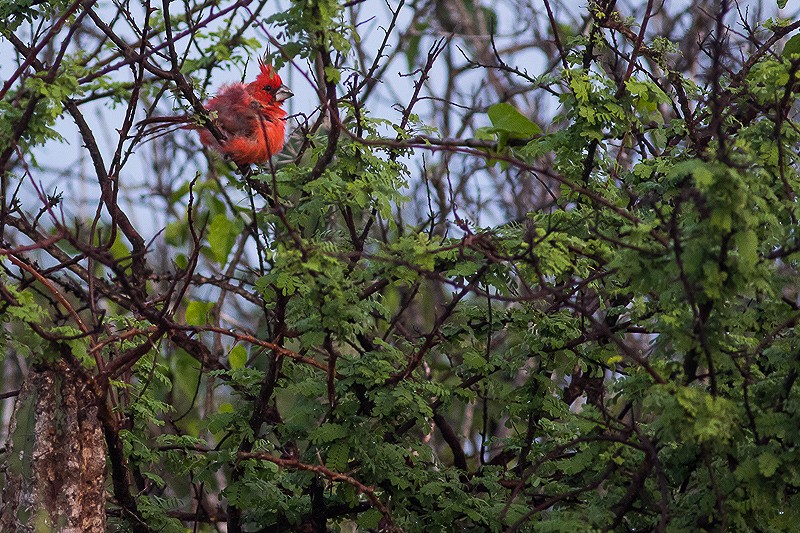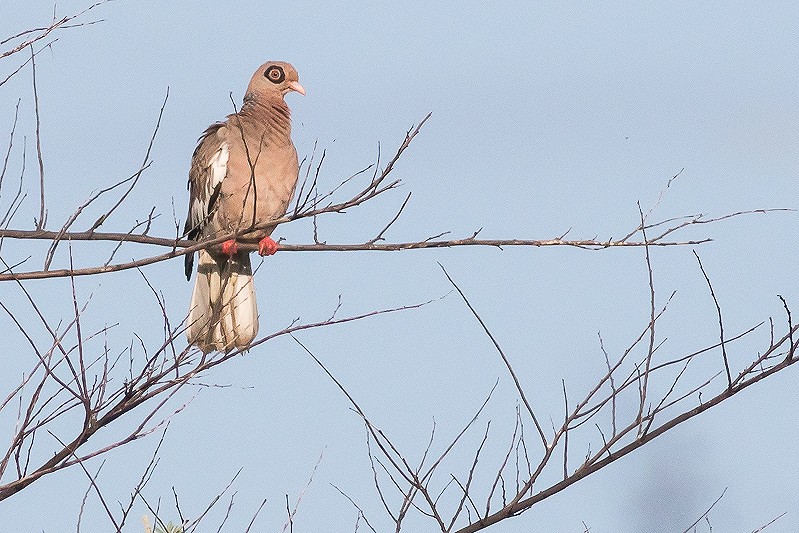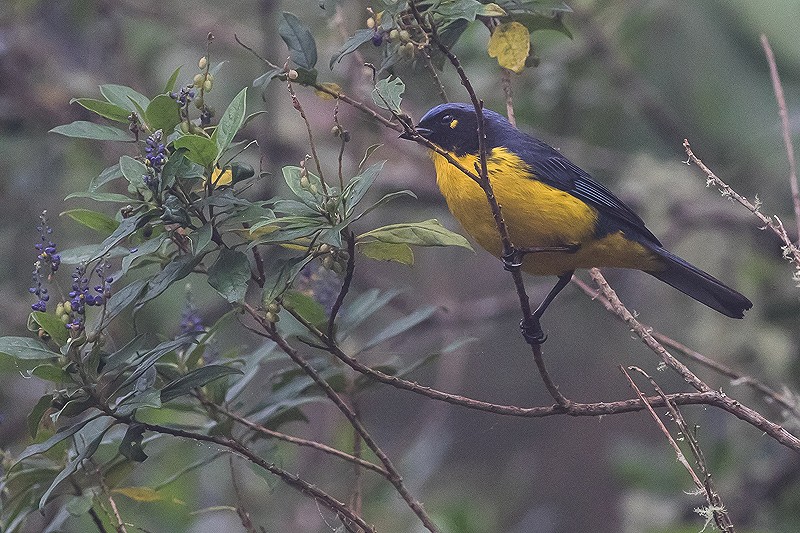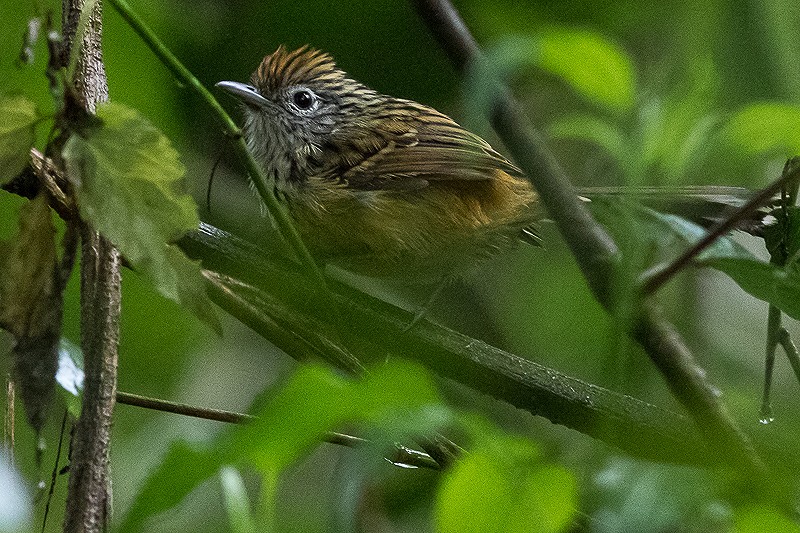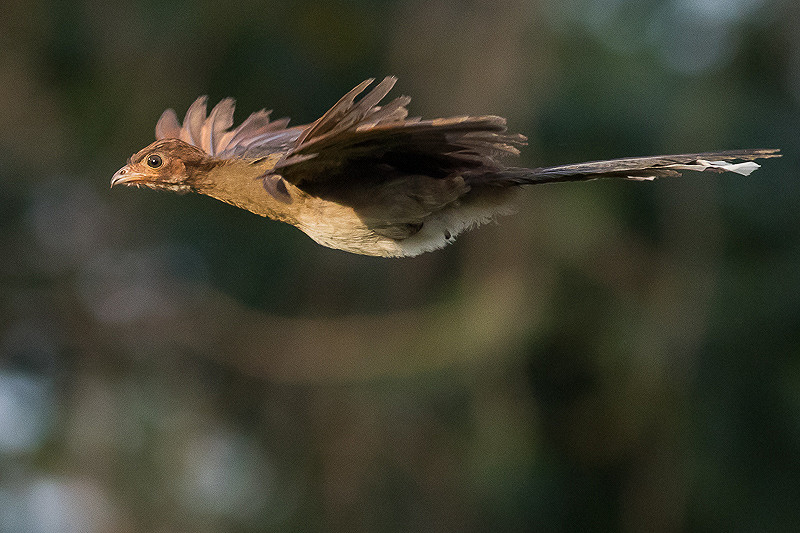October 21 - 29: Colombia (3)
1 November 2016 · Arjan Dwarshuis · 7111 × bekeken
PLEASE MAKE A DONATION NOW!
world.observation.org/arjan
www.arjandwarshuis.com/#biggestyear
October 21st RIO CLARO
This morning we were joined by Diego Calderon, the chief of Colombia Birding. Originally he would have guided us himself this trip, but due to very unfortunate and very understandable circumstances he had to cancel. So it was great that he could join the party this morning. Near the small town of Cocorna we went in search of two endemics, namely the White-mantled Barbet and Beautiful Woodpecker.
We found the barbet with ease in the Secropia dominated patches of secondary forest below the town, but the woodpecker proved unexpectedly elusive. By 10 AM we had to stop our search hoping that we would connect with this species at Rio Claro Reserve.
We had breakfast at a nice roadside restaurant with the whole gang before we said goodbye to Diego and headed for Rio Claro Reserve.
Our afternoon at Rio Claro Reserve was productive. We quickly found one of our main targets, the endemic and localized Magdalena Antbird, which is restricted to the limestone karst forest in this region. After lunch we went on a steep and slippery trail to look for the Antioquia Bristle Tyrant, a rare and endangered endemic that is only reliably found in this reserve. Luckily José’s stakeout for this species was spot on and we had great views of a pair of this rare tyrant. A huge bonus at this site was a small flock of the unpredictable Sooty Ant-tanager.
October 22nd THE BEAUTIFULY DIFFICULT WOODPECKER
Last night we heard Chocó Screech-Owl, so at 5 AM Garry and I were outside our cabin trying (again) to see the bird. We didn’t get a response, but while we were trying for the Screech a juvenile Spectacled Owl started calling. Garry and I quickly got the bird in the torch and since I knew this was a new and much wanted bird for Gerjon and Remco, I raced back to the cabin to fetch them. One minute later Remco and Gerjon stood next to us in their boxer shorts and together we watched this beautiful owl. It must have been a funny sight for the owl to watch these two half naked Dutchmen down below him.
After breakfast we walked a creek towards an Oilbird Cave. The trail itself resulted in little more than a Grey-cheeked Nunlet, but for Garry, Remco and Gerjon the Oilbird cave was a big highlight. In fact they had to wade waste deep through water to see the birds – I had seen this species several times before so I did not join them – and as always when you put in a great effort the reward is extra sweet.
So far only one specialty in the Rio Claro area did not show itself, the Beautiful Woodpecker. We were all getting worried that we would miss this charismatic species since by now it was sunny, hot and bird activity had completely stopped. There was one last spot to try and in the dying seconds of our stay in Rio Claro a bird suddenly started calling! Ten Minutes later we left Rio Claro with the woodpecker in the bag.
We commenced with the six hour drive to the ProAves Cerulean Warbler Reserve, but there was one last very cool species waiting for us en route, the Northern Screamer. We found several of these cool birds along the roadside.
October 23th THE PROAVES CERULEAN WARBLER RESERVE
First a little bit of context about ProAves:
ProAves is the Colombian equivalent of the Jocotoco Foundation. They buy pieces of land which house certain endangered bird species. By turning the forest and the land which it stands on into nature reserves they secure the future of these birds. Birdwatchers that want to see these species can stay in the ProAves lodges in these reserves and all the income from this ecotourism is used to buy more pieces of land. A beautiful system of positive feedback that helps to safeguard the future of many endangered Colombian bird species.
This Colombia trip we would stay in three different ProAves lodges. Last night we had arrived at the Cerulean Warbler Reserve Lodge. The Cerulean Warbler Reserve was created to protect the wintering ground of the vulnerable Cerulean Warbler, because ProAves not just protects Colombia’s endemic birds, it also looks after the many migratory species that winter in Colombia. Besides the Cerulean Warbler there are several very rare endemic bird species that have their stronghold in this reserve and of course we were keen on tracking those species down.
Just before daybreak we found ourselves on horseback heading for the reserve and at dawn we were at the hummingbird feeders. Here we saw the beautiful endemic Black Inca. Higher up we saw the recently described Magdalena Tapaculo and we played hide-and-seek with a covey of Gorgeted Wood-quails, which only Gerjon managed to see.
We found our best bird of today in a patch of bamboo right behind our cabins, the critically endangered Niceforo’s Wren. We managed fantastic views of this very rare bird. The highlight of today however were the many North American warblers in the shaded coffee plantations below the lodge. We saw American Redstart, Tennessee, Blackpoll, Blackburnian, a Golden-winged and of course Cerulean Warbler on their wintering grounds.
October 24th RECURVE-BILLED BUSHBIRD
Today we had the chance to come face-to-face with one of our most wanted birds of our Colombia trip, namely the Recurve-billed Bushbird. This peculiar antbird with bizarre banana-shaped bill is endemic to the hills of mid-central Colombia. It is endangered through habitat loss and nowadays is hard to find.
We had travelled all the way to the ProAves Bushbird Reserve to hopefully connect with this amazing species, but we knew that our chances of actually seeing it were slim. It was the wrong time of the year and most of the bamboo had died half a year ago.
After breakfast – with Speckled and Black-hooded Tanager on the bird table - at the ranger’s house we started our Bushbird quest. Accompanied by the ranger – this is absolutely needed here since the area is notoriously unsafe at the moment - we walked down a slippery trail down a gorge in the reserve hoping to at least hear a bushbird.
After walking down for half an hour we suddenly heard a bird calling and Jose played the call to hopefully persuade the bird to come into view, but nothing happened. After ten minutes with zero response I was about to give up when Remco shouted ‘I got the bird’! And there completely in the open an immature male Recurve-billed Bushbird was feeding on bamboo right next to the trail. Absolutely amazing! Other good birds that morning were the endemic Klage’s Antbird and Grey-throated Warbler.
The presence of armed militia in the area – actually there to protect us from potential robbers, gave us a clear signal that it was time to leave. Since we’d seen all but one of our targets, we were reluctant to leave this sometimes dangerous area.
We arrived late in the evening in Manaure, a small town at the base of the Perijá Mountain Range.
October 25th OFF THE BEATEN TRACK
At 5 AM we found ourselves in a Toyota Landcruiser going up into the Perijá Mountains. This seldom visited mountain range at the border with Venezuela has been declared ‘safe’ only very recently and to protect the last remaining elfin forest and paramo in these mountains, ProAves has bought land here and built an eco lodge. We were proud to call ourselves the first Dutchmen to visit this area, which holds four endemics and twice as many future splits.
At the lower part we birded the heavily degraded forest patches that were actually quit birdy, but this activity mostly consisted of migratory warblers and species favouring degraded habitats. We were extremely lucky – or you can better say that José was extremely sharp – to find the poorly known Perijá Brush-Finch in one of these forest patches.
After dropping our stuff at the ProAves Lodge we drove on a very bad road to the paramo where we parked our 4x4 about 2 kilometres from the boarder with Venezuela. Somewhere in this misty and rainy paramo landscape we had to find two of the least known birds of South America, namely the Perijá Thistletail, a furnarid, and Perijá Metaltail, a hummingbird. We had to work hard to find these birds and only after three hours of battling through a very wet Paramo we managed to find both birds. Luckily we got fantastic views of both species.
Other interesting stuff up here is the local race and 100 percent full species ‘Perijá’ Lacrimose Mountain-tanager and ‘Perijá’ Rufous Spinetail. Surely if more research is done in this remote place the list of Perijá endemics is bound to grow in the future.
October 26 DOWN TO THE COAST
This morning we gave our only miss – the ‘Perijá’ Golden-bellied Starfrontlet – one more shot, but after two hours of searching we had to abort our mission to commence with the six hour drive to the small coastal town of Camarones.
In the dying seconds of the day we reached our only possible site for Rufous-vented Chachalaca and by some stroke of incredible luck we found our target within one minute after leaving the car. Now there was one last target to find that was only possible today, the rare Todd’s Nightjar, but dark clouds were assembling above our heads and gradually it started to rain. Luck was again on our hands however since just as we were about to give up a Todd’s Nightjar came straight to the tape and gave a fantastic flyby!
Then it started to rain, the biggest rainstorm I’ve ever witnessed. It was pouring down so heavily that I had to weir only my swim shorts to get from our accommodation to the restaurant on the other side of the clearing. It even rained in our rooms, in fact there was a layer of water in all our rooms. Ridiculous!
October 27th CLEANING UP AROUND LOS CAMARONES
We had a crazy difficult mission this morning, namely to clean up all the specialties – at least 15 species – around Los Camarnes before breakfast. Luckily the weather had improved and the heavy rain from last night had disappeared over the horizon.
The dry forest around Los Camarones was a welcome change to birding in humid montane forest and to make things even more enjoyable the rain storm from last night had seemed to cause a warbler ‘fall’. We saw 8 different warbler species and among these were Magnolia and Chestnut-sided, both rarities in Colombia. We also managed to find all but one of our targets – Chestnut Piculet – and highlights included the gaudy Vermillion Cardinal, the localized Tocuyo Sparrow and the beautiful Orinoco Saltator.
After breakfast we headed towards the Sierra Nevada de Santa Marta. En route – again thanks to José’s spot-on stakeouts – we quickly picked up White-bellied Antbird, Black-backed Antshrike and Lance-tailed Manakin.
We arrived in the foothills of the Santa Marta Mountains just before nightfall which gave us half an hour of birding time. In that short time span we saw the stunning Golden-winged Sparrow, Santa Marta Foliage-gleaner and a hummingbird which, judging by Garry’s pictures, could very well be the very rare and seldom photographed Santa Marta Sabrewing.
After two hours on the worst road I’ve ever been on – Santa Marta has been hit hard by a huge hurricane recently – we arrived at the wonderful El Dorado Lodge. Here we got a very warm welcome and enjoyed the fantastic food, fast Wi-Fi and hot showers. To me it is absolutely amazing that the El Dorado staff managed to fix this place so well after being struck by such a huge catastrophe. After dinner we made a short walk down from the lodge, joined by local birder and guide Gabio Utria. Finding the recently discovered Santa Marta Screech Owl proved not that difficult, with Remco noticing it calling within a couple of minutes. Although the bird was very close, dense foliage prevented views unfortunately.
October 28 SANTA MARTA ENDEMICS: A RACE AGAINST THE CLOCK
Due to our crazy schedule targeting all but ten of Colombias endemics, we had just one full day at El Dorado and in that single day we had to find as many Santa Marta endemics as possible. Luckily we had José who pushed us to arrive at the highest part at the crack of dawn. This meant that we had to leave at 4:00 AM. When we arrived at the elfin forest it was misty, but thanks to our early arrival birds were active and singing. We quickly found Santa Marta Warbler, -Wren, -Mountain-tanager, -Brush-Finch, Yellow-crowned Whitestart and I was very lucky to see a Black-backed Thornbill attending a flowering Bromeliad. Unfortunately it went all too fast for the rest to connect with this very rare bird.
Since we had little time on our hand we had all agreed that we would have to suffice with heard-only Tapaculos and Antpittas, however we broke this agreement with every Rufous Antpitta, Santa Marta Antpitta and Brown-rumped Tapaculo we heard and 3 hours later we had seen only the tapaculo and wasted a lot of time on trying to see the antpittas. Of course I’m doing a record attempt, but I’m still a birdWATCHER! In our attempt to see these birds we had lost a lot of time, which meant that we had to have lunch very quickly at the lodge, pack our bags and head down as fast as possible. Unfortunately it had started raining, which made our mission next to impossible. About eight target birds in less than two hours…
We had to accept the fact that we dipped White-tipped Quetzal, Yellow-billed Toucanet and Santa Marta Blossomcrown. We had passed their preferable altitude and we were simply running out of time. However we had an incredible run of birds in the last hour of daylight. Santa Marta Tapaculo, Santa Marta Antbird, Coopman’s Tyrannulet, the soon to be split Bangs’s Wood-Wren and, finally, Colombian Brushfinch in the fading light. Wow, what a last full day in Colombia! With 90 percent of the Santa Marta endemics in the bag within a single day, we have no reason to complain!
October 29th GOODBYE MIGHTY SOUTH-AMERICA!
Already my last morning on the mighty continent of South-America. The past three months and three weeks have been crazy. I saw more than 2300 new birds for my Biggest Year and I’m just 94 birds away from a new world record. With two months to go wherein I will travel through Cuba, Panama, Costa Rica, Guatemala, Mexico, Jamaica, the United States, Vietnam, Taiwan and finally Japan, I still believe that 7000 species is possible. It will be tough and all the pieces of the puzzle have to fall together, but it is possible. One thing is certain, I will give it everything that I got. This means even longer hours, shorter lunches, less sleep, better preparations and total dedication.
Our last morning in Colombia was enjoyable with – among others – the endemic Chestnut-winged Chachalaca and an unexpected fly by of six Military Macaws. My final South American new bird was Swainson’s Hawk, a group of seven birds migrating overhead literally two minutes before boarding my flight to Havana!
I want to thank my travel buddies Garry Bakker, Remco Hofland and Gerjon Gelling for coping with me these stressful, but amazing weeks. I enjoyed your companionship a lot and you are all amazing birders.
José Castano, you are a terrific bird guide and a wonderful person to have spent these 20 days in Colombia with. Diego Calderon and COLOMBIA BIRDING, thanks for putting this rollercoaster ride together, it was incredible. As Arny would say: ‘I’ll be back’.
Arjan Dwarshuis
PLEASE MAKE A DONATION NOW!
world.observation.org/arjan
www.arjandwarshuis.com/#biggestyear


